Did you know that microwave green beans are the easiest and quickest way to prepare this healthy side dish? With just a few minutes in the microwave, you can have tender, flavorful green beans without any hassle. Whether you’re looking for a simple weeknight accompaniment or a speedy addition to a special meal, microwave green beans are the perfect choice.
When it comes to cooking green beans, time-consuming methods like boiling or steaming can be a thing of the past. By utilizing the power of your microwave, you can have deliciously cooked green beans in a fraction of the time. Say goodbye to standing over a pot of boiling water – microwave green beans are here to revolutionize your cooking routine.
In this article, I will share with you an easy microwave green beans recipe that will become your go-to method for preparing this healthy side dish. You’ll also learn about the various types of green beans you can use, the best seasonings and toppings to elevate their flavor, and helpful tips on cooking and storing fresh green beans.
So, if you’re ready to discover the quickest and simplest way to enjoy green beans, let’s dive in!
Key Takeaways:
- Microwave green beans provide a quick and easy way to cook this healthy side dish.
- Traditional methods like boiling or steaming can be time-consuming and unnecessary.
- In this article, you’ll find an easy microwave green beans recipe, tips for choosing the right type of green beans, and suggestions for flavorful seasonings and toppings.
- Storing and serving size information will also be covered, ensuring you have all the knowledge needed to make the most of this convenient cooking method.
- Prepare to be amazed by the simplicity and deliciousness of microwave green beans!
Why Choose Microwave Green Beans
There are several reasons why you should choose microwave green beans as a side dish. Firstly, they are a healthy option, low in calories and high in fiber, making them a nutritious addition to your meal. Green beans are packed with vitamins and minerals, including vitamin C, vitamin K, and potassium, which support overall health and well-being.
Secondly, they are incredibly quick and easy to make, perfect for busy weeknights when you don’t have much time to spend in the kitchen. With just a few simple steps, you can have tasty green beans ready to serve in no time. Plus, cooking green beans in the microwave helps retain their vibrant color and crisp texture.
“Microwave green beans are a convenient and healthy side dish option. They are packed with nutrients and can be prepared in minutes, making them a perfect choice for busy individuals or families. Plus, the microwave cooking method ensures that the green beans retain their nutrients and flavors.”
So, whether you’re looking for a healthy side dish or a quick and easy recipe, microwave green beans are the perfect choice. With their numerous health benefits and simple preparation, you can’t go wrong with this delicious and nutritious addition to your meal.
Benefits of Microwave Green Beans:
- Low in calories and high in fiber
- Quick and easy to make
- Retains vibrant color and crisp texture
- Packed with nutrients and vitamins
Types of Green Beans
When making microwave green beans, you have the option to use various types of green beans. The most common ones are regular green beans, also known as string beans or snap beans, which can be found in most grocery stores. French green beans, also called haricots verts, are another option that cooks more quickly and doesn’t require trimming. There are also different types of green beans available, as mentioned in an article by The Spruce Eats, if you’re interested in exploring more options.
| Type of Green Bean | Description |
|---|---|
| Regular Green Beans | Also known as string beans or snap beans, regular green beans are the most common type. They have a bright green color and a standard bean shape. |
| French Green Beans (Haricots Verts) | French green beans are slimmer and shorter than regular green beans. They are tender and cook more quickly, making them a popular choice for many recipes. |
| Other Types of Green Beans | There are various other types of green beans available in the market, each with its unique characteristics. These may include Italian flat beans, wax beans, and purple green beans, to name a few. |
Exploring different types of green beans can add variety to your microwave green bean recipes. Whether you stick with the regular green beans or try out the French green beans or other varieties, each type offers its own distinct texture and flavor profile.
Seasonings and Toppings
Microwave green beans act as a blank slate, allowing you to get creative with flavors and toppings. The simplest way to season them is with butter, salt, pepper, and garlic powder, as mentioned in the recipe. However, you can also try other flavor boosters such as:
- panko bread crumbs with butter and lemon zest
- sesame seeds and a drizzle of tahini
- parmesan cheese with butter and garlic powder
- fried onions
- fresh herbs like thyme and oregano
- lemon zest
- roasted red pepper sauce
- pomegranate arils
- honey mustard
- pesto
- or crushed toasted nuts
These toppings can add extra flavor and texture to your microwave green beans, allowing you to customize and enhance the dish according to your taste.
How to Cook Microwave Green Beans
To cook microwave green beans, start by rinsing green beans under running water to remove any dirt or impurities. Next, trim the ends of the beans by cutting off any tough or woody parts. This step helps ensure that your green beans cook evenly and have a pleasant texture.
Once your green beans are rinsed and trimmed, place them in a microwave-safe bowl or dish that has a lid or cover. This will help retain moisture and speed up the cooking process.
Now, it’s time to microwave the green beans. The recommended cooking time for microwave green beans is 4-6 minutes. However, this can vary depending on the thickness of the beans and your desired level of tenderness. Keep an eye on the beans as they cook and adjust the cooking time accordingly.
After microwaving, carefully remove the bowl from the microwave using oven mitts or a kitchen towel, as it may be hot. Drain any excess water that may have accumulated during cooking.
Finally, add your preferred seasonings to the cooked green beans. A simple combination of butter, salt, pepper, and garlic powder can enhance the flavor of the beans. Toss the beans gently to ensure that they are coated evenly with the seasonings.
And there you have it! Your microwave green beans are now ready to be served as a delicious and nutritious side dish.
Tips for Cooking Microwave Green Beans
Here are some helpful tips for cooking microwave green beans:
- When rinsing the green beans, make sure to use cold water to preserve their crispness and vibrant color.
- If you prefer your green beans to be more tender, you can increase the cooking time by 1-2 minutes.
- For added convenience, you can purchase pre-washed and trimmed green beans.
- Consider experimenting with different seasonings and toppings to customize the flavor of your microwave green beans.
Recipe: Microwave Green Beans
Here’s a simple recipe for microwave green beans:
| Ingredients | Instructions |
|---|---|
| 1 pound green beans |
|
“Microwave green beans are a hassle-free way to enjoy this nutritious vegetable in just a few minutes. With simple steps like rinsing, trimming, and microwaving, you can have perfectly cooked green beans on your plate in no time.” – Green Bean Lover
Tips for Cooking Microwave Green Beans
When it comes to cooking microwave green beans, there are a few tips and tricks that can help you achieve the best results. Let’s explore some handy techniques to ensure your green beans are perfectly cooked, vibrant in color, and bursting with flavor.
1. Trimming Green Beans
Before cooking, make sure to trim the ends of the green beans. To do this efficiently, line up the ends against the blade of a knife and chop them off all at once. This saves time and ensures that your green beans are evenly sized for cooking.
2. Amount of Water
Rinsing the green beans before microwaving usually provides enough moisture for the cooking process. However, if the beans are dry or you prefer a slightly more tender texture, adding 1-2 tablespoons of water can help. This will create steam and prevent the beans from becoming too dry.
3. Keeping Beans Vibrant Green
Green beans are most appealing when they retain their vibrant green color. To achieve this, it’s important to serve them immediately after cooking. If you cover the beans for too long, they may turn a pea green color. So, strive to keep that vibrant green hue by serving the beans right away.
4. Making Beans Ahead
If you’re planning to serve microwave green beans for company and want to save time on the day of the event, consider blanching the beans ahead of time. Blanching involves quickly boiling the beans for a few minutes, then transferring them to ice water to stop the cooking process. Once blanched, you can refrigerate the beans and add seasonings just before serving. This way, you can have the beans ready in advance while still enjoying their fresh taste.
5. Cook Time for Desired Texture
The cooking time for microwave green beans depends on your desired texture. For a crisp-tender result, microwave the beans for around 4-5 minutes. If you prefer a softer texture, increase the cooking time to 6-7 minutes. Keep in mind that the thickness of the beans will also affect the cooking time, so adjust accordingly. Test the beans for doneness and adjust the time to achieve the texture you prefer.
6. Convenience of Pre-Washed and Trimmed Green Beans
For the ultimate convenience, you can opt for pre-washed and trimmed green beans. They are readily available in many grocery stores, saving you time and effort in preparation. Simply open the package, rinse if necessary, and they’re ready to be cooked. This is a great option for busy individuals or those who want to simplify their cooking process.
By following these tips, you’ll be able to cook microwave green beans to perfection every time. Enjoy the convenience, vibrant color, and delicious flavors of this quick and healthy side dish!
Nutritional Benefits of Green Beans
When it comes to healthy side dishes, green beans are an excellent choice. Not only are they delicious, but they also offer a wide range of nutritional benefits that can support your overall well-being.
First and foremost, green beans are low in calories, containing just 31 calories per cup. This makes them a great option if you’re watching your weight or trying to maintain a balanced diet. Additionally, green beans are virtually fat-free and have very low sugar content, making them a guilt-free addition to your plate.
What sets green beans apart is their high fiber content. Fiber plays an essential role in maintaining a healthy digestive system and promoting regular bowel movements. It can also help manage cholesterol levels and keep you feeling fuller for longer, which may aid in weight management.
Moreover, green beans are packed with beneficial vitamins and minerals. They are a great source of vitamin C, which supports a strong immune system, and vitamin K, which is essential for healthy blood clotting. Green beans also provide significant amounts of vitamin A, which promotes good eye health.
Minerals found in green beans include manganese, which supports bone health and metabolism, and potassium, which helps regulate blood pressure. They also contain smaller amounts of other minerals like iron, magnesium, and calcium.
Overall, incorporating green beans into your meals can provide you with a variety of health benefits. From their low calorie count and high fiber content to their abundance of vitamins and minerals, green beans offer a nutrient-rich addition to any balanced diet.
Check out the table below for a breakdown of the nutritional content of green beans:
| Nutrient | Amount per Cup (125g) |
|---|---|
| Calories | 31 |
| Fat | 0g |
| Sugar | Low |
| Fiber | 2.7g |
| Vitamin C | 11.9mg (20% DV) |
| Vitamin K | 14.4mcg (18% DV) |
| Vitamin A | 867IU (17% DV) |
| Manganese | 0.22mg (11% DV) |
| Potassium | 211mg (6% DV) |
| Iron | 1mg (6% DV) |
| Magnesium | 22mg (5% DV) |
| Calcium | 37mg (4% DV) |
With their combination of low calories, high fiber, and a variety of essential nutrients, green beans prove to be a versatile and nourishing choice. Whether they’re steamed, roasted, or prepared in the microwave, green beans are an easy way to incorporate health into your everyday meals.
Storing Fresh Green Beans
When it comes to storing fresh green beans, proper handling is key to maintaining their crispness and flavor. Here are some tips on how to store your green beans:
Refrigeration
To store fresh green beans in the refrigerator, start by removing any elastic bands or ties that may be bundled around the beans. Next, place the unwashed green beans in a plastic bag or sealed container and store them in the crisper drawer. This will help to maintain their freshness and prevent moisture loss. Refrigerated green beans can stay fresh for up to a week, allowing you to enjoy them whenever you’re ready to cook.
Freezing
If you find yourself with an abundance of green beans, freezing them is a great way to preserve their quality for future use. The best part is, there’s no need to blanch the beans before freezing! Simply wash the beans thoroughly, trim off the ends, and pat them dry. Then, place the beans in an airtight container or freezer-safe ziplock bag, removing as much air as possible. Label the container or bag with the date and freeze. Frozen green beans can be stored for several months, ready to be added to soups, stews, stir-fries, or enjoyed as a side dish.
Serving Size of Green Beans
When it comes to serving green beans, it’s helpful to have a general estimate in mind. A good rule of thumb is to allow about 1 pound of green beans for every 4 people or 1/4 pound per person. This serving size is a great starting point, but you can always adjust the quantity based on your desired portion sizes and the number of servings you need.
So, what does 1 pound of green beans look like? Well, it’s approximately equivalent to 3 cups of fresh beans with the tips cut off. This measurement can give you an idea of how much you’ll need for your recipe or meal. Keep in mind that the size and thickness of the beans may vary, so it’s always a good idea to have a kitchen scale or measuring cup handy to ensure accuracy.
Image:
Whether you’re cooking for a small group or a larger gathering, knowing the serving size of green beans can help you plan and prepare accordingly. It’s a simple way to ensure that everyone gets a satisfying portion of this delicious and nutritious side dish.
Overcooked Green Beans
When green beans are overcooked, they may start to collapse, lose their shape, and become mushy. It’s important to avoid overcooking them to retain their texture and flavors. Keeping a close eye on the cooking time and checking the beans for desired tenderness can help prevent overcooking.
Overcooking green beans can result in a loss of their natural shape and moisture content. Instead of crisp, vibrant beans, you’ll end up with limp and mushy ones that lack the desired texture. The longer the beans are cooked, the more they break down, leading to their structural integrity being compromised.
To avoid overcooked green beans, it’s important to follow the recommended cooking time and keep a close eye on their tenderness. Depending on the freshness and thickness of the beans, the cooking time may vary slightly. It’s always better to undercook the beans slightly rather than overcook them, as they can continue to cook after being removed from the heat source.
Green beans should be cooked until they are tender-crisp, meaning they still have a slight crunch when bitten into but are cooked enough to be easily chewed. To test their doneness, pierce a bean with a fork or taste a piece to determine if it has reached the desired level of tenderness. If the beans feel soft and lose their shape when touched, it’s a sign that they are overcooked.
“Overcooked green beans lose their shape and texture, and there’s a significant loss of moisture. It’s crucial to keep an eye on the cooking time and ensure that the beans are cooked just until tender-crisp.”
By properly cooking green beans and avoiding overcooking, you can maintain their fresh and vibrant qualities. This will result in a more enjoyable eating experience and preserve their nutritional value. Don’t let those green beans turn mushy and lose their shape! Pay attention to the cooking time and tenderness, and you’ll have perfectly cooked green beans every time.
Conclusion
In conclusion, microwave green beans are a fantastic choice for a quick and effortless side dish. They offer a healthy and nutritious addition to any meal, with the added convenience of being easy to prepare. Whether you’re pressed for time on a busy weeknight or looking for a simple yet delicious option for a special occasion, microwave green beans are a versatile and flavorful choice.
The beauty of microwave green beans lies in their adaptability. You can experiment with different seasonings and toppings to create your own perfect recipe. From classic butter, salt, and pepper to more adventurous options like lemon zest, sesame seeds, or Parmesan cheese, the possibilities are endless. Let your creativity shine through and enjoy the burst of flavors in every bite.
Not only are microwave green beans tasty, but they also pack a nutritional punch. With their low calorie content, high fiber content, and abundance of vitamins and minerals, they are a healthy choice that can help support a balanced diet. Whether you’re watching your weight or aiming to incorporate more vegetables into your meals, microwave green beans are an excellent option.

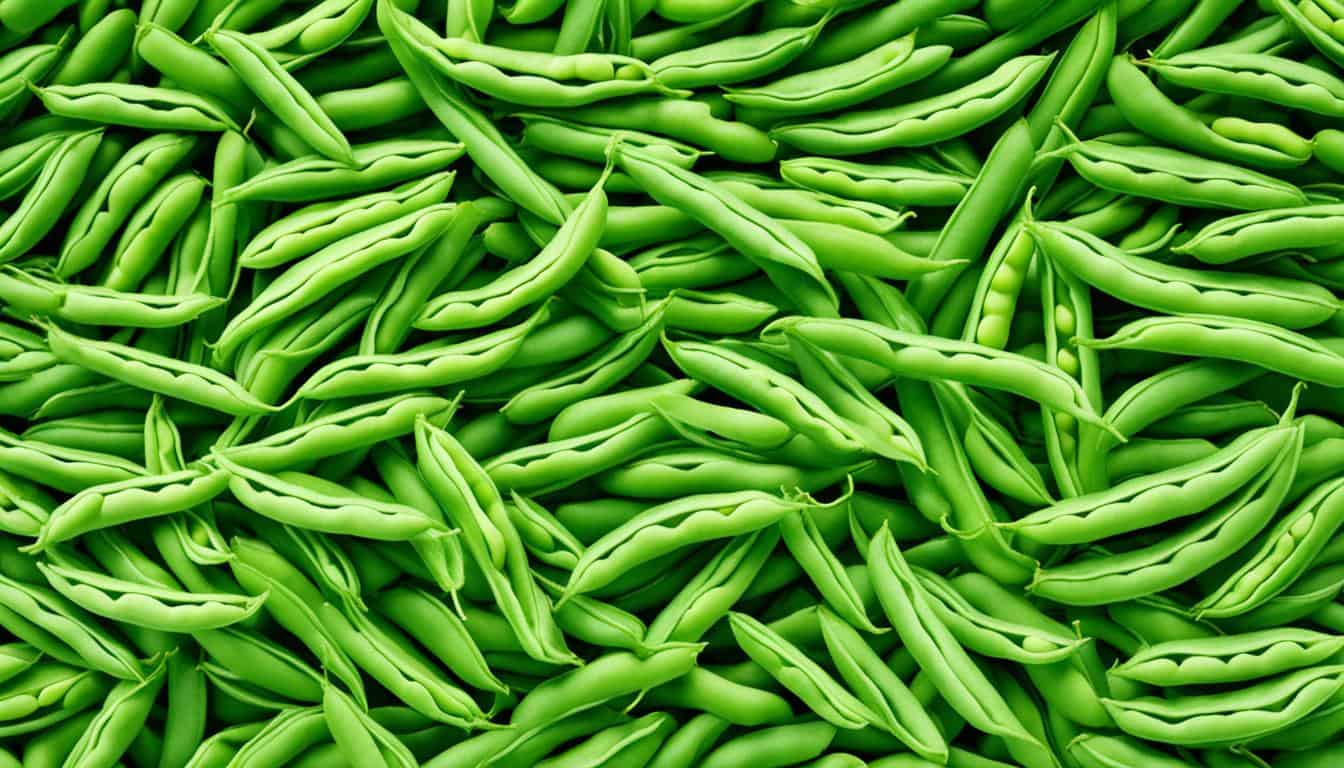
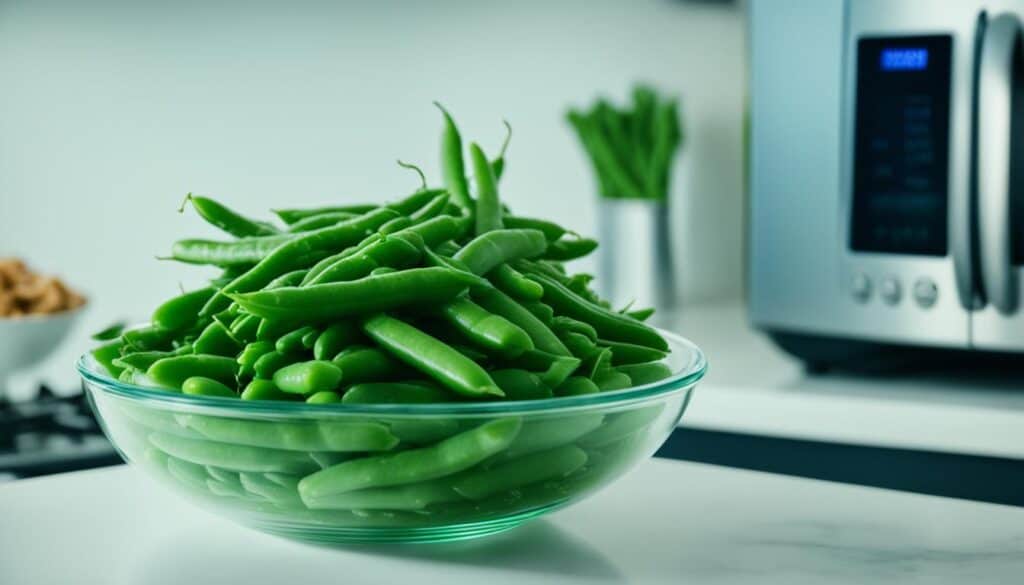
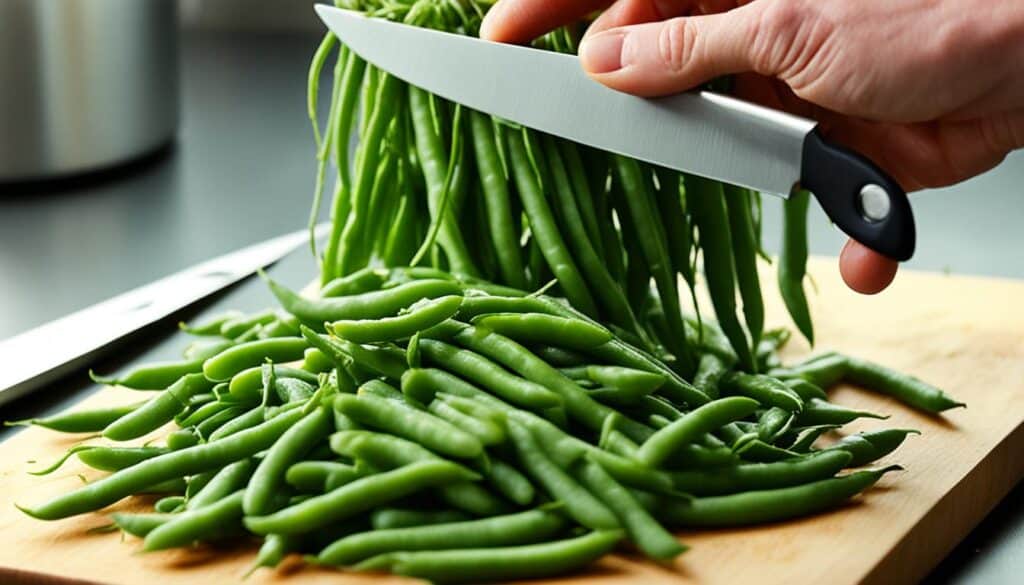
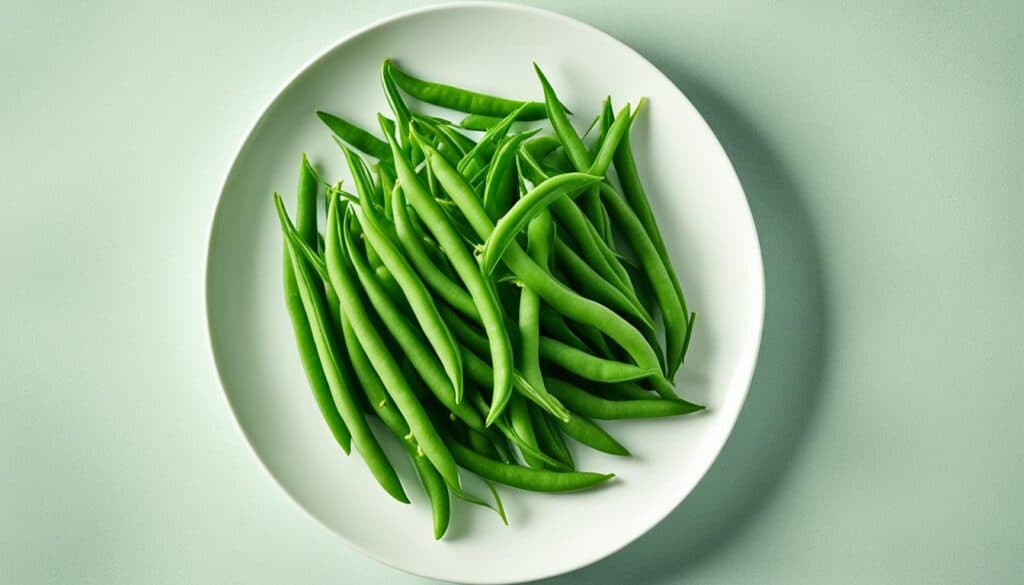
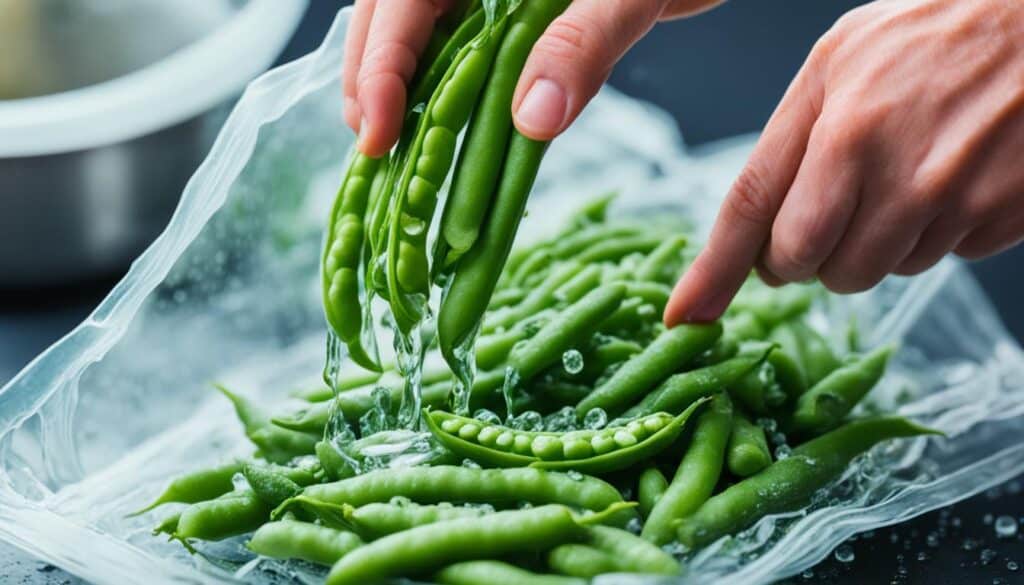
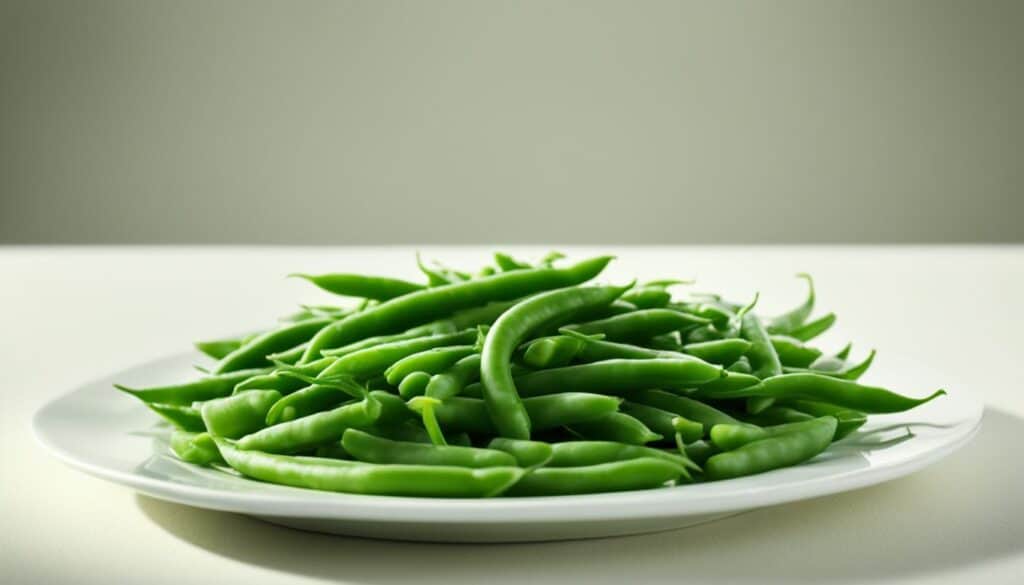



Leave a Reply